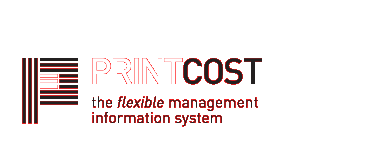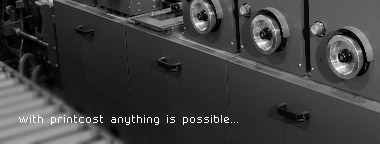Last month I talked about house rules, and how they can help you with QEQ (quick entry quoting) to even further automate the quoting process. As promised I’m continuing here with more detail.
Remember the house rule we wrote last month for running paper.
Set quantity
If n GSM > Lit-200
Zero
This rule is says that if the paper weight is greater than 200 GSM then do not use this machine activity. There would need to be another activity (for running board) with a similar but “reverse” rule.
Looking through each item in this rule. Remember the rule is applied to the activity, in this case the machine running. By default, QEQ will set the quantity for this activity to be the number of passes required. As we have set up an activity for running paper and one for running board all we need to do is “turn off” (set the quantity to zero) the activities we don’t want for this quote. For the example I have defined board as being over 200 GSM. You could define this differently for each press if you wished.
The first line in the house rule reads “set quantity”. This means we are setting the quantity rather than any of the other items we could set, like minimum, lift or factor.
The next line is an “if” statement. This is used to signify that the line or lines indented below are to be evaluated. The amount of the indent is not significant, if they are indented then they are actioned only if the if statement is true.
The “if” statement has 4 parts, each separated by a space. Part one in this case is “n”, this means the test is done numerically (the alternate option for this is “s” for a string comparison). Part two is the first value to test, in the case GSM. There are many special words like GSM, ColoursFront, etc that can be used, these can be selected using control T in a house rule. Part three is the type of test. In the first example we are using < or less than, that is the “if” statement is true if the first test value is less than the second test value. Other options for this parameter are > (greater than), <= (less than or equal to), >= (greater than or equal to), = (equal) and # or <> (not equal to). Part four is the second test value.
Note that test values can also be literals (begin with LIT-) or can be other fields in the Printcost database (begin with FLD-).
The final line in this rule is evaluated, in this case is zero.
Over the next months I’ll bring you details on multiple if statements, and calculations like Lit-20 * ColoursMax + Lit-35.
If you want to comment or suggest a topic for ‘tip of the month’, contact Chris on email cc@printcost.com


